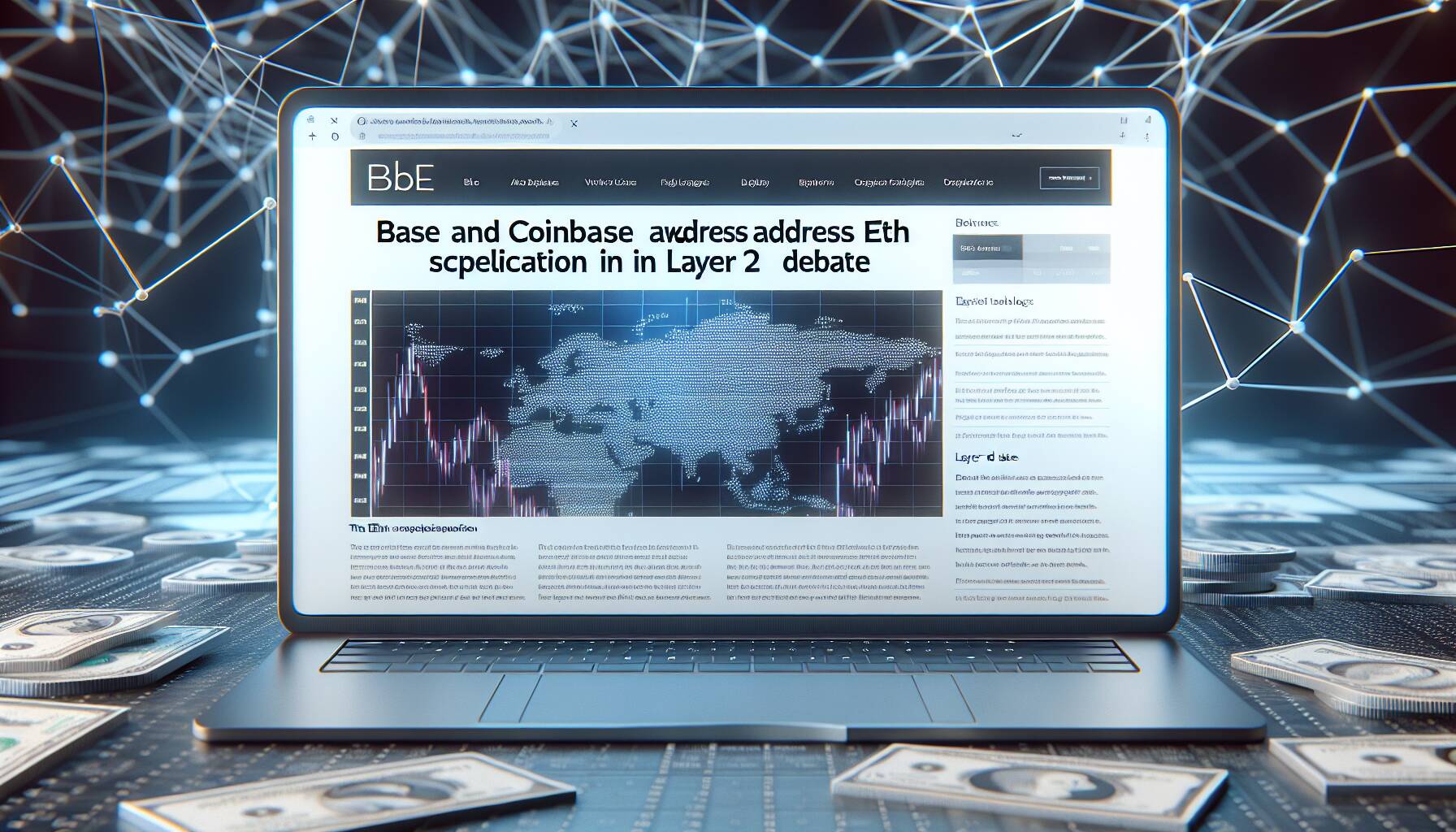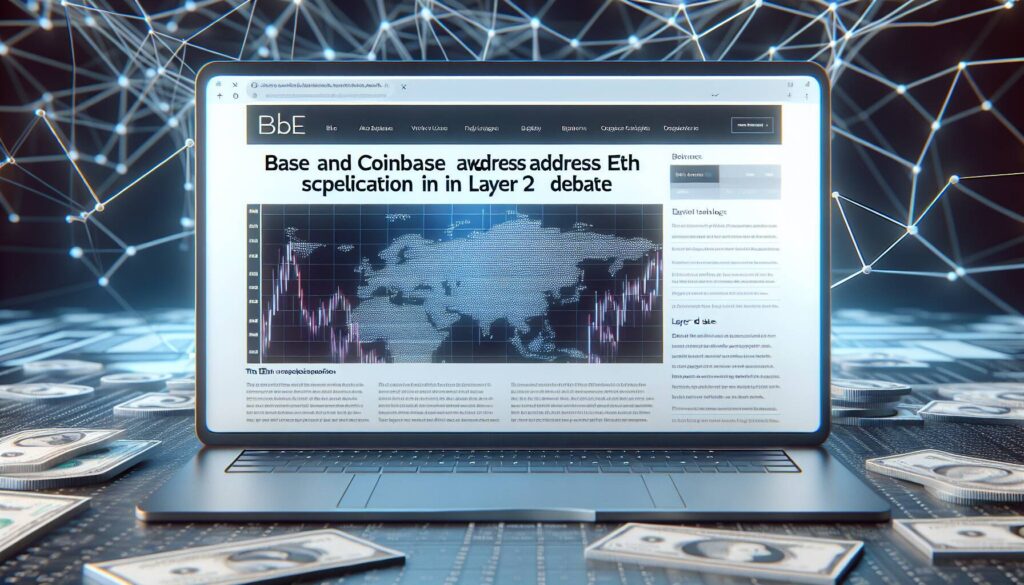In the ever-evolving landscape of cryptocurrency, Layer 2 scaling solutions like Base are at the forefront of discussions surrounding transaction efficiency and the integrity of network fees. Recently, a member of the Base team, known as Kabir.base.eth, took to social media platform X to address swirling rumors regarding Coinbase’s potential sale of ether (ETH), which have raised eyebrows among community observers and analysts alike.
Kabir clarified that contrary to speculation, Coinbase has not been offloading the ether it has accumulated, which reportedly exceeds 0 million. This amount is claimed to be over two times greater than Base’s total earnings in ETH since its inception. In his statements, he emphasized the transparent approach taken by Base and Coinbase in managing their long-term holdings, which amount to over 100,000 ETH, in a bid to reassure stakeholders about their commitment to the Ethereum ecosystem.
“Base and Coinbase have and continue to hold ETH and publicly disclose our long term holdings,” Kabir stated.
The conversation escalated following comments from a pseudonymous user, Santisa, who alleged that Base has been transferring all its sequencer fees to Coinbase since its launch, leading to the suspicion that Coinbase may have been selling these coins. The sequencer, which is crucial for ensuring that transactions are processed smoothly and in a timely manner, earns fees in ETH for its role—a function that is pivotal for the operation of Base.
As the industry watches closely, concerns raised by figures like Sonic Labs’ Andre Cronje touch on the broader implications of centralized sequencers within Layer 2 frameworks. The skepticism underscores a sentiment that profit motives might not fully coincide with the foundational values of Ethereum, particularly in relation to its inflationary challenges due to the dynamics of Layer 2 tokenomics.
The ongoing dialogue about the operations of Layer 2 solutions, especially regarding their transaction fee revenue and the impact on ETH supply, highlights the complexities inherent in the cryptocurrency market. Stakeholders are keenly observing how these narratives influence both investor sentiment and the long-term health of the Ethereum network.

Base and Coinbase: Clarifying ETH Rumors
The ongoing discussion surrounding the operations of Base and its sequencer Coinbase has raised important questions regarding the handling of Ethereum (ETH) and its implications for the broader Ethereum ecosystem.
- Base’s Official Position:
- Base member Kabir.base.eth claimed that Coinbase has not sold ETH and holds over 0 million in ETH, more than 2x Base’s total earnings from ETH.
- Base utilizes offchain custody for security and audits, explaining the transfer of funds to Coinbase.
- Base reportedly aims to earn and spend in ETH to cover Layer 1 costs and provide support.
- Concerns About Centralization:
- Critics like Santisa and Andre Cronje argue that Coinbase’s role as the sole sequencer node presents centralization risks.
- Centralized sequencers can misalign profit models with the broader Ethereum values, potentially affecting network integrity.
- Impact on ETH Supply:
- Layer 2 solutions like Base could contribute to inflationary pressures on Ethereum due to fee distribution.
- Critics argue that a large portion of transaction fees ends up offloaded into the market, reducing ETH burning on the mainnet.
- The situation may also hinder ETH’s deflationary potential and broader market perceptions of its value.
“L2s are why Ethereum is inflationary again. SCALE ETHEREUM.” – Andre Cronje
These key points illustrate the complexities of Layer 2 solutions and their interdependency with Ethereum’s economic dynamics, which can potentially influence investor perspectives and strategies in the crypto market.
Base vs. Coinbase: Analyzing the Layer 2 Solution Controversy
The ongoing saga surrounding Base and its relationship with Coinbase has stirred up quite a conversation in the crypto world, particularly regarding Ethereum scaling solutions. While Base maintains that it is a responsible steward of its ETH assets, accusations suggest otherwise—raising questions about the implications for both the project’s integrity and the broader Ethereum landscape.
On one hand, Base, represented by Kabir.base.eth, defends its position by emphasizing transparency and a considerable ETH reserve, said to be over 0 million. This stance showcases a competitive edge; public disclosure of long-term holdings can instill confidence among users and investors looking for reliability in a time when mistrust runs rampant in the crypto space. Furthermore, the offchain custody mechanism that Base employs offers extra layers of security which can help alleviate anxiety for those wary of centralized control.
Conversely, the doubts raised by figures like Santisa and Andre Cronje shed light on potential disadvantages and inherent conflicts in the centralized sequencing approach. The notion that Base might be transferring sequencer fees to Coinbase suggests a possible misalignment of incentives. Critics assert that such an arrangement could hinder Ethereum’s original decentralized ethos, ultimately affecting the platform’s credibility. If accusations persist, they could alienate users who prioritize decentralization and wish to see profits more closely aligned with network health.
This scenario is a double-edged sword: while traditional investors might find solace in Base’s claims of security and high reserves, decentralized advocates could envision severe repercussions. The centralization of sequencers could lead to an Ethereum ecosystem that some might perceive as increasingly inflationary, as pointed out by Cronje. This raises a critical question—who stands to gain or lose?
Investors and users who prioritize stability and transparency will likely be drawn to Base’s assertive communications and strong ETH holdings. However, purists in the Ethereum community might feel squeezed out, as they may not support a model they see as compromising the principles of decentralization and trustlessness. Overall, this tension positions Base and Coinbase uniquely in the Layer 2 landscape, with the potential to bolster or dampen their reputations depending on how they navigate the scrutiny.

















